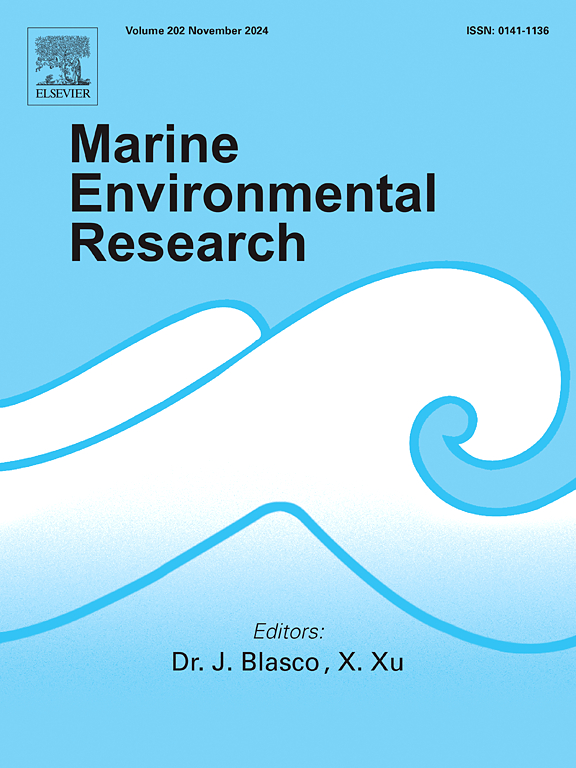Linking taxonomic and functional diversity of the macrobenthic community to a depth gradient in a sandy shore ecosystem of the SW Atlantic Ocean
IF 3
3区 环境科学与生态学
Q2 ENVIRONMENTAL SCIENCES
引用次数: 0
Abstract
This work investigates the depth-related distribution patterns of macrobenthic communities in a sandy shore ecosystem. We analyse changes in community descriptors and biological traits and the importance of wave effects on the macrobenthic community [wave exclusion hypothesis (WEH)] at three different depths: in the inner surf zone at approximately 1 m, and in the nearshore zone at 5 m and 15 m. A total of 130 taxa, primarily Arthropoda, Annelida, and Mollusca, were collected across depths. Following the WEH, abundance and biomass increased with depth, reaching their highest values at 15 m. Richness and diversity were significantly higher at intermediate depths, where the presence of both sandy and rocky substrates supported a more diverse community. Species turnover dominated beta diversity patterns, indicating important species replacement across the depth gradient, especially between the shallow surf zone and deeper subtidal areas. Biological traits analysis revealed that mobile, detritivorous, and deposit-feeding organisms dominated the surf zone, while sedentary, filter-feeding, and omnivorous organisms characterised deeper areas. These distribution patterns are linked not only to the contrasting wave action but also to the sedimentary conditions along the depth gradient. These results provide key insights into the influence of depth on the structure and composition of macrobenthic communities in sandy shore ecosystems, revealing distinct biological zones across the depth gradient and emphasizing the role of substrate characteristics in shaping benthic assemblages.
求助全文
约1分钟内获得全文
求助全文
来源期刊

Marine environmental research
环境科学-毒理学
CiteScore
5.90
自引率
3.00%
发文量
217
审稿时长
46 days
期刊介绍:
Marine Environmental Research publishes original research papers on chemical, physical, and biological interactions in the oceans and coastal waters. The journal serves as a forum for new information on biology, chemistry, and toxicology and syntheses that advance understanding of marine environmental processes.
Submission of multidisciplinary studies is encouraged. Studies that utilize experimental approaches to clarify the roles of anthropogenic and natural causes of changes in marine ecosystems are especially welcome, as are those studies that represent new developments of a theoretical or conceptual aspect of marine science. All papers published in this journal are reviewed by qualified peers prior to acceptance and publication. Examples of topics considered to be appropriate for the journal include, but are not limited to, the following:
– The extent, persistence, and consequences of change and the recovery from such change in natural marine systems
– The biochemical, physiological, and ecological consequences of contaminants to marine organisms and ecosystems
– The biogeochemistry of naturally occurring and anthropogenic substances
– Models that describe and predict the above processes
– Monitoring studies, to the extent that their results provide new information on functional processes
– Methodological papers describing improved quantitative techniques for the marine sciences.
 求助内容:
求助内容: 应助结果提醒方式:
应助结果提醒方式:


